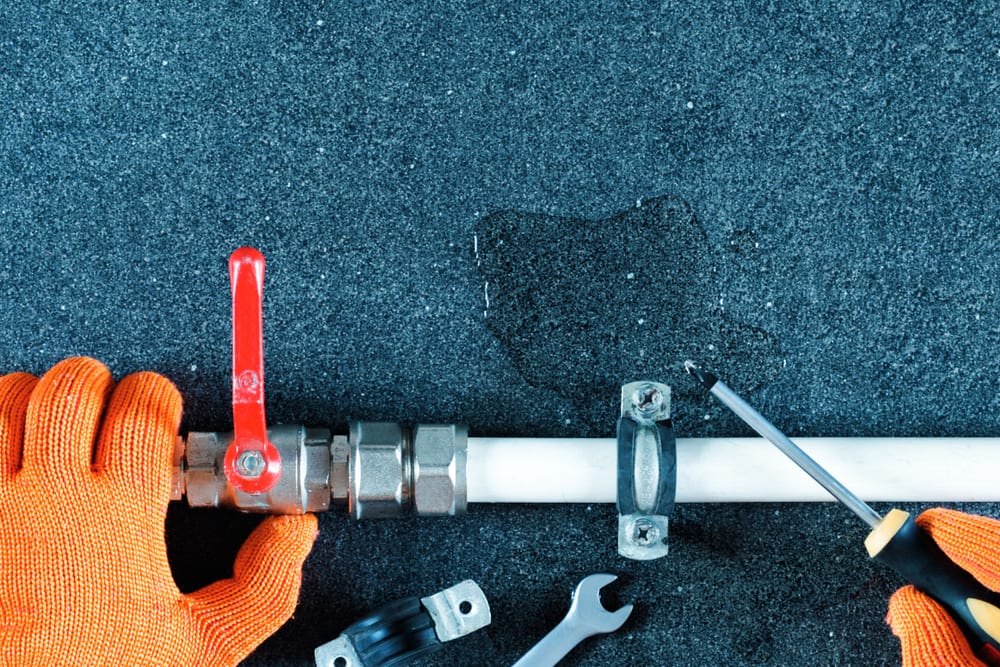6 Ways to Discover Concealed Water Leakages in Your House
6 Ways to Discover Concealed Water Leakages in Your House
Blog Article
On this page down the page yow will discover some outstanding advice in relation to Leaking water lines.

Early detection of leaking water lines can reduce a potential calamity. Some little water leaks may not be noticeable.
1. Check Out the Water Meter
Every residence has a water meter. Inspecting it is a guaranteed manner in which helps you discover leaks. For beginners, switch off all the water sources. Make sure no one will flush, utilize the faucet, shower, run the washing device or dishwashing machine. From there, go to the meter and watch if it will transform. Because no person is using it, there ought to be no motions. That indicates a fast-moving leakage if it relocates. If you spot no modifications, wait a hr or 2 and also examine back once again. This indicates you might have a slow-moving leakage that can also be below ground.
2. Check Water Intake
If you spot abrupt adjustments, despite your intake being the same, it suggests that you have leakages in your plumbing system. An abrupt spike in your bill indicates a fast-moving leakage.
A steady boost every month, even with the exact same routines, shows you have a sluggish leak that's additionally slowly rising. Call a plumber to thoroughly inspect your residential property, especially if you really feel a warm area on your flooring with piping underneath.
3. Do a Food Coloring Examination
When it comes to water usage, 30% comes from bathrooms. If the color in some way infiltrates your bowl during that time without flushing, there's a leakage in between the container as well as bowl.
4. Asses Outside Lines
Do not fail to remember to examine your outdoor water lines too. Test spigots by affixing a yard tube. Needs to water seep out of the connection, you have a loose rubber gasket. Replace this as well as make certain all connections are tight. If you've obtained a lawn sprinkler, it will help get it professionally took a look at and maintained each year. One little leakage can waste tons of water as well as increase your water bill.
5. Evaluate the situation and inspect
Home owners should make it a habit to check under the sink counters and also even inside closets for any bad odor or mold growth. These two warnings show a leak so punctual interest is needed. Doing regular examinations, also bi-annually, can save you from a significant trouble.
If you recognize your residence is already old, maintain a careful eye on your heating systems, tubes, pipes etc. Check for stainings and compromising as many pipelines as well as devices have a life expectancy. They will also naturally deteriorate due to damage. If you think dripping water lines in your plumbing system, do not wait for it to rise. Call an expert plumber today so you don't wind up with an awful mess in your home.
Early detection of dripping water lines can alleviate a possible catastrophe. Some small water leakages might not be visible. Inspecting it is a surefire means that helps you find leaks. One small leak can squander bunches of water and also surge your water expense.
If you presume leaking water lines in your plumbing system, do not wait for it to intensify.
How to Know If Your Home Has a Hidden Leak
Water Meter Reveals Inexplicable Water Usage
If you’d like to test whether or not there’s a leak somewhere in your home, you can do this using your water meter. Here is how to conduct the test:
Don’t use any water in your home for at least 30 minutes; this also means not turning on faucets or water-using appliances.
Go outside, and check your water meter for activity.
If your water meter shows that there was activity, even though no one was using any water, this proves that there is a leak in your home.Visible Mold or Mildew Growth
Leaks behind walls create moist, dark environments that allow mold and mildew to grow and thrive. Eventually, you might see mold growth forming on the wall closest to a hidden leak.
If mold is growing in an area that receives a high amount of moisture, such as a bathroom, it may simply be an indication that better ventilation is needed. However, if you see mold growth on a wall or the ceiling in an area where you would not expect, you probably have a hidden leak.
Musty, Mildew Odor
Sometimes you might not be able to see the mold or mildew that is growing as a result of a leak. However, the smell can give the problem away just as easily. If you catch a whiff of something musty, there’s a good chance that old water is collecting somewhere in your home that you can’t see.
Stained/Warped Walls, Ceilings, or Floors
When your home soaks up water, a variety of red flags can become visible, including ceiling stains, bubbling drywall, warped walls, and sagging floors. While these issues can be caused by excess humidity, they can also be signs that a pipe or plumbing connection has started leaking behind your walls.
Inexplicably High Water Bill
After a while, you get a general sense for what your water bill should be. If you own a pool or sprinkler system, your bill will tend to be higher during summer. However, if you receive a water bill that seems especially high, and you can’t figure out what caused it, then you may have a hidden leak somewhere that’s increasing your bill.
https://www.plumbingjoint.com/blog/2019/july/how-to-know-if-your-home-has-a-hidden-leak/

I'm certainly very excited about Locating water leaks and I'm hoping you enjoyed the blog entry. Enjoyed reading our write-up? Please share it. Help others discover it. I cherish reading our article about Locating water leaks.
Report this page